Outdoor Activities and Adventures, Bucharest
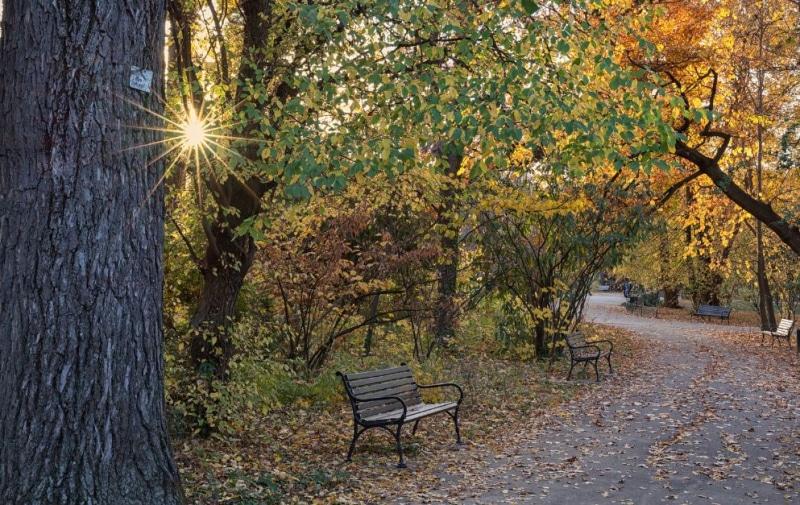
Removed from Unnamed collection
Botanical Garden Bucharest 
The Botanical Garden in Bucharest is a cultural institution, part of Bucharest University. It was founded by Alexandru Ioan Cuza in 1860, near COTROCENI PALACE.
The great exhibition, where tropical plants, huge palm or banana trees, awesome members of the orchids family, gigantic decorative trees or wild ferns can be seen. There are thematic greenhouses, very well organized in the order you to need only one hour, or one hour and a half to see all plants and trees and make free amazing pictures.
The Decorative Sector is at the entrance in the Botanical Garden and here you can find more than 500 plants that assure all over the year a great view. The flowers,Tullipa collection, Paeonia and not only, are cultivated in large groups. It was arranged in 1956.
Rare Plants Sector is the home of rare, special plants that need protection in Europe. They found it here and many of them would have been gone for a long time now if this area of the Botanical Garden hadn’t been arranged in 1962. There are plants from Dobrogea or southern Muntenia but no only. So, while you travel to Bucharest, you can visit the rare plants sector although it is an area where scientists have a lot of work to do, taking care of plants in Paeonia family, Salvia Transilvania or Fritillaria Orientalis. https://bucharest-travel.com/bucharest-botanical-garden/
Map
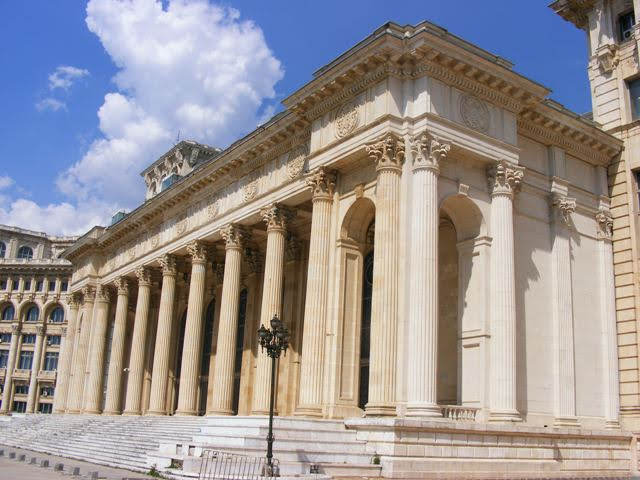
Removed from Unnamed collection
Contemporary Art Museum Bucharest 
The Contemporary Art Museum in Bucharest houses a great collection called Seeing the history from 1947 to 2007, which is an exhibition about the communist period, the progress of the Eastern European civilization, about the life of people in this period, including the Romanian Revolution in 1989 and the process of modernization of the country after the communists and the integration in the Euro-Atlantic civilization. Of course, the most important pieces of the collection are the art masterpieces exhibited, but the social, political and economical contexts are also explained on the first floor of the museum. There are also events organized here, like the recent one called The art condition in Russia and Eastern Europe in postmodern society, by an art historian Yunnia Yang from Taiwan. An impressive collection of photos made after masterpieces signed by great artists is also housed by the Museum. We are talking about 3 millions of copies in a digital archive. https://bucharest-travel.com/bucharest-contemporary-art-museum/
Map
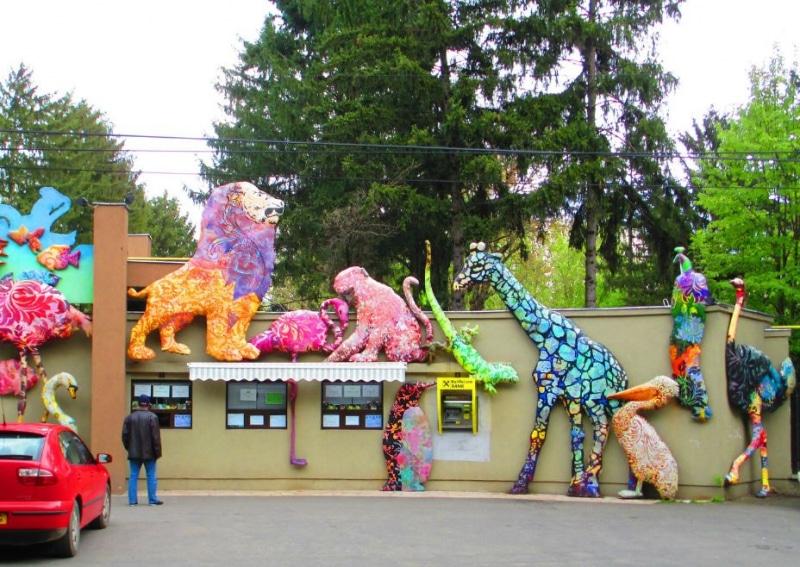
Removed from Unnamed collection
Bucharest Zoo 
Bucharest Zoo Garden is a great place to spend an afternoon when you visit the Romanian Capital. The Zoo is outside Bucharest, near Baneasa Forest and also near Baneasa Shopping Center. So, if you have time and need some fresh air and also a shopping tour in an elegant mall, you might like the area.
The Zoo in Bucharest total surface is estimated at about 6 ha. It was founded in 1955. A ticket for children is 6,5 RON. Children always find the Zoo Garden very interesting.
The ZOO in Bucharest can be visited every day from 9 to 17. You are not allowed to feed the animals. The Romanian capital had no Zoo before 1955. Yet there were special corners in CISMIGIU GARDEN, CAROL PARK or HERASTRAU PARK where you could admire beautiful birds and mammals. Don’t forget, if you visit the ZOO in Bucharest, from 12 to 2 PM, keep quiet…some lions are sleeping. https://bucharest-travel.com/bucharest-zoo/
Map
Explore more places related to this search:
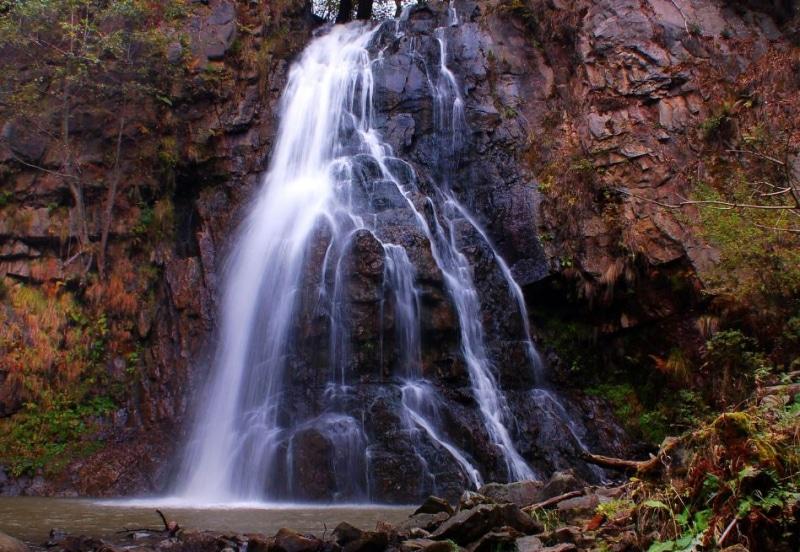
Removed from Unnamed collection
Bucias Waterfall 
Bucias waterfall is situated between Nemira and Vrancea Mountains, at an altitude of 500 m. It is the biggest waterfall of county Bacau and the most beautiful. Waterfall has a fall of 20 m.
From Manasitrea Casin go to village Scutaru and then Bucias forest district.
From the Bucias forest district, upstream on the river valley, after 3 km we reach the waterfall Bucias. http://www.uvisitromania.com/tourist-attractions/bacau/bucias-waterfall-id576
Map
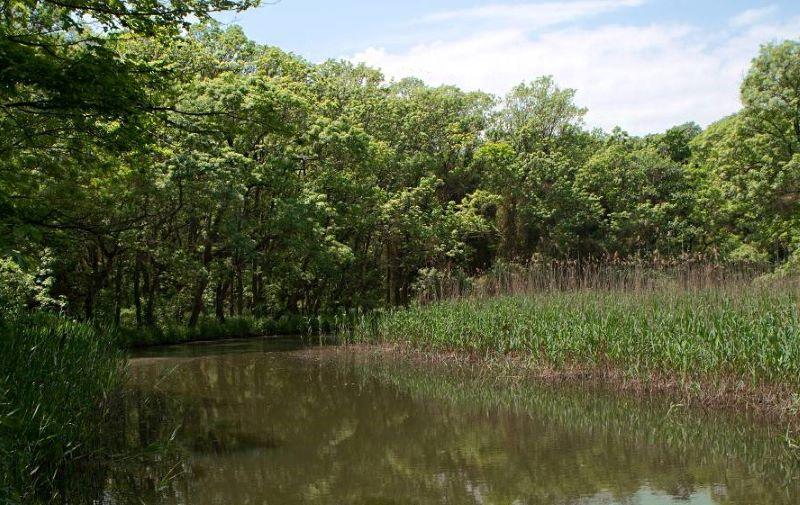
Removed from Unnamed collection
The Baltata Reserve 
The Baltata Reserve is located in the area of the village of Kranevo, Balchik municipality, and covers the lowest stream of Batova river, right by the resort of Albena. The reserve is located at a distance of about 11 kilometers from Balchik.
Baltata covers the northernmost parts of Europe’s dense forests, where many tree species can be seen, such as White Poplar (Populus Alba), Field Maple (Acer campestre), Black Alder (Alnus glutinosa), etc. The region is home to more than 260 species of higher plants, 28 of which are protected. The dominating grass species are Hyacinth (Hyacinthus), Shrubby Cinquefoil (Potentilla fruticosa), Marshmallow (Althaea Officinalis), etc.
The territory of Baltata is also home to 36 mammal species, 15 amphibian species and 16 fish species. More than 180 are the bird species, established in the region. Some of them are the Purple Heron (Ardea purpurea), Green-headed Goose (Anas platyrhynchos), Mallard (Grus grus), etc.; over 90 of them are nesting birds. http://bulgariatravel.org/en/object/207/Baltata_poddyrjan_rezervat
Map

Removed from Unnamed collection
Sea Garden 
Nowadays the Marine Gardens form an imposing park where you can visit the Natural Science Museum, the Naval Museum, the Copernicus Astronomy Complex planetarium, the first in the country, the zoo and the Terrarium. Here one can find the only Dolphinarium and Aquarium in the country.
There are also a swimming pool, tennis court, an open-air theater and a new children's complex (opened on 1 May 2002) with a lot of amusements: water wheels, slide, archery, trampoline.
Along the alley, which runs parallel to the coastline, there are a number of small cafes and restaurants, offering seafood specialties as well as attractive discos. http://visit.varna.bg/en/parks_gardens/preview/36.html
Map

Removed from Unnamed collection
Nemira Mountains Nature Reserve 
Nemira nature reserve is a protected area of national interest located within the district of Bacau (90%) and Covasna (10%).
The nature reserve has an area of 3.490 ha, with rich flora and beech pine forests and with protected species of flowers (Edelweiss, is a well-known mountain flower).
Lake Valea Uzului is a natural dam lake situated at an altitude of 532 m, 4 km from Salatruc, and is declared a natural monument by its membership to Nemira Mountains Nature Reserve, included in the European ecological network. It has an area of 4.5 ha and a depth of 3m.
The highest peak from the reserve is Nemira Peak, with 1.649 m.
Nemira nature reserve houses a rich population of carnivores: brown bear, wolf, fox, otter, lynx, wild cat, but also Carpathian deer, bats, rabbit, deer, wild pigs, predatory birds: golden eagle, greater spotted eagle, forest eagle, pigeon hawk, long-eared owl, boots buzzard, hornets, tawny owl, large owl, little owl, sparrow hawk, common buzzard, kestrel red, swallows falcon, the peregrine falcon. The development of agro-tourism hotels and chalets makes the Mountains Nemira Nature Reserve be a recreational place, as they say, "green" tourism. http://www.uvisitromania.com/tourist-attractions/bacau/nemira-mountains-nature-reserve-id579
Map
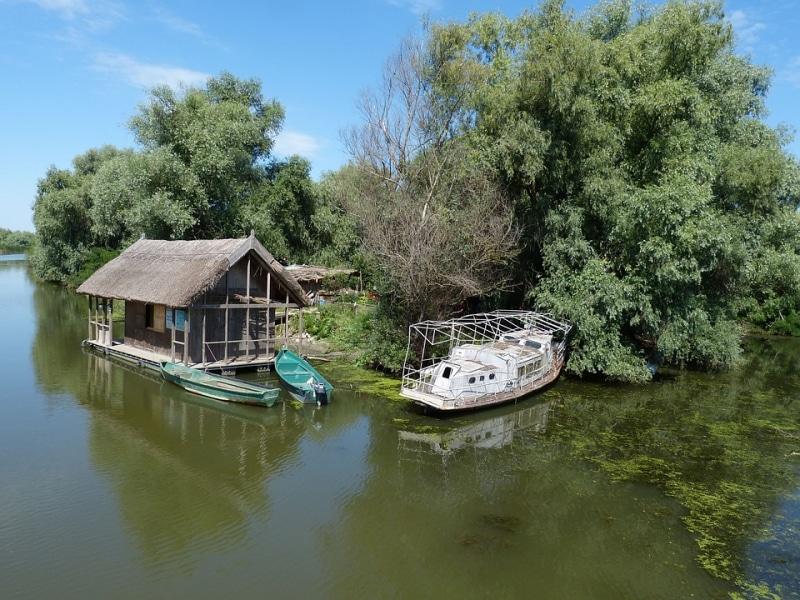
Removed from Unnamed collection
Danube Delta History Museum 
Danube Delta History Museum- is located at 32 Progresului St (Tel: (240) 515.866) and is a good introduction to the region's flora and fauna plus the traditional way of life of the Danube Delta's fishermen. http://www.tulcea.com/
Map
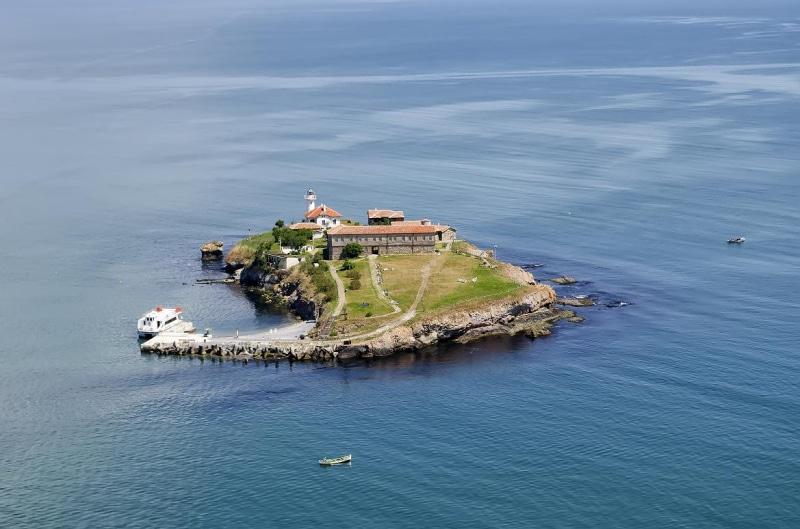
Removed from Unnamed collection
St. Anastasia Island 
St. Anastasia Island is located in the Burgas Bay in the Black Sea. It is a volcanic rock island, 12 meters high, at some places up to 17 meters high, and its area is almost 9 decres. Between 1959 and 1990 it was known as Bolshevik Island. It is surrounded by mystery and there are hundreds of legends and stories about it.
A healing place, offering wonder-working herbs and potions from old recipes, medieval monastery cell, where you can stay overnight, restaurant with authentic Burgas meals from old recipes… all this in the most romantic place in the Burgas Bay – St. Anastasia Island. You can get there on a boat, leaving from the Sea station Burgas.
Until recently, this sounded like a fairy tale, but for several years it is s part of Burgas’ reality, thanks to the project, won by Municipality Burgas – “Cultural-historical heritage on St. Anastasia Island” and “Burgas – an attractive and competitive tourist destination”, financed by the Operative Programme “Regional Development” https://www.gotoburgas.com/en/places-to-go/view/23
Map
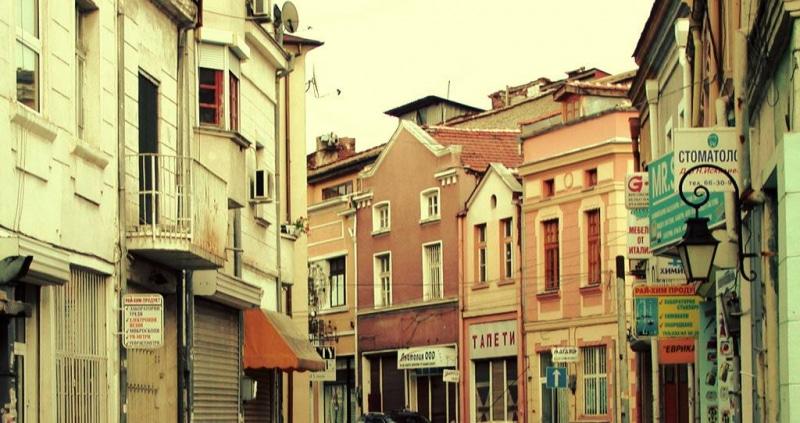
Removed from Unnamed collection
Kapana (The Trap) 
Steering just a little from the Main Street in Plovdiv and imperceptibly you find yourself in “Kapana” (literal translation: “The Trap”). Once you get there you would never want to go back.
You will find galleries, workshops, ateliers, studios, cozy restaurants and shops, as well as other art spaces, and there is even a vinyl shop! And to back our words up, here is a list of places you should not miss in “Kapana”: Vinyl’s home place Soul Searchin’ – Point-Blank Gallery – Darvodelie Atelier – What A monster – Kotka and Mishka....
All these places fill “Kapana” with modern cultural content not only with their daily activities but also organizing events with social, economic and cultural effect for the city. What happens in the new/old art district of Plovdiv is so much – concerts, exhibitions, festivals, forums, brainstorming sessions and discussions, theatrical performances, art installations, screenings, workshops and many more. http://www.visitplovdiv.com/en/node/2984
Map

Removed from Unnamed collection
The Old Town Plovdiv 
Ancient Plovdiv Architectural and Historical Reserve (The Old Town) is located in the Central part of the city of Plovdiv on the Three Hills (Nebet Tepe, Taksim Tepe and Dzhambaz Tepe) and covers an area of about 35 ha. It was formed due to the continuous life over the centuries – from Prehistoric, Thracian, Hellenic, Roman, Late-ancient, Medieval, National Revival, and Post-Liberation periods to present days. The combination of the prevailing Antiquity, Middle Ages and Revival in an independent core within the modern city is one of a kind for our country.
From the Roman and the Late-ancient period in the Old Town have been best preserved the Ancient Theatre, the Ancient Forum, the Roman Stadium, Early Christian basilicas, public and private buildings, pipelines, street network and parts of the fortress walls, constructed in the Antiquity and the Middle Ages.
From the National Revival period the authentic architecture of houses as well as several churches and school buildings have been preserved. The residential buildings are divided into two main groups. The first group of houses corresponds to the mountain asymmetrical type, but it has been expanded and enriched for the needs of the urban life. The second group is the so-called “Plovdiv symmetrical urban house”. This group of buildings is characterized by a unique national interpretation of the European baroque. http://www.visitplovdiv.com/en/node/676
Map
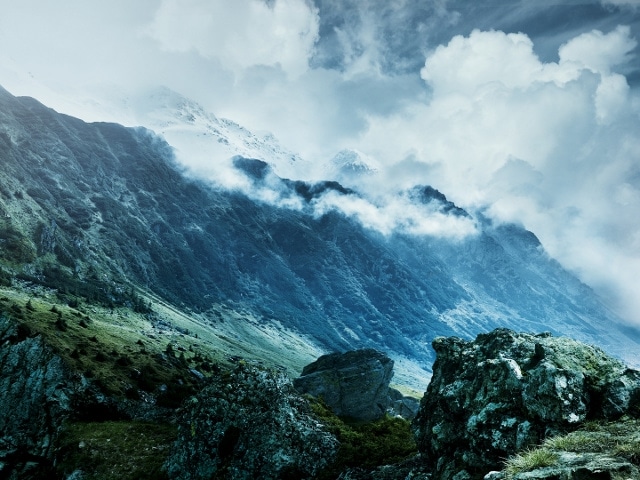
Removed from Unnamed collection
Calimani National Park 
The Calimani National Park (Parcul National Calimani) is a protected area situated in Romania. Located in Calimani Mountains, including the largest volcanic crater in Romania with a diameter of about 10 km (out now), Calimani National Park has a total area of 24.041. http://www.uvisitromania.com/tourist-attractions/suceava/calimani-national-park-id326
Map
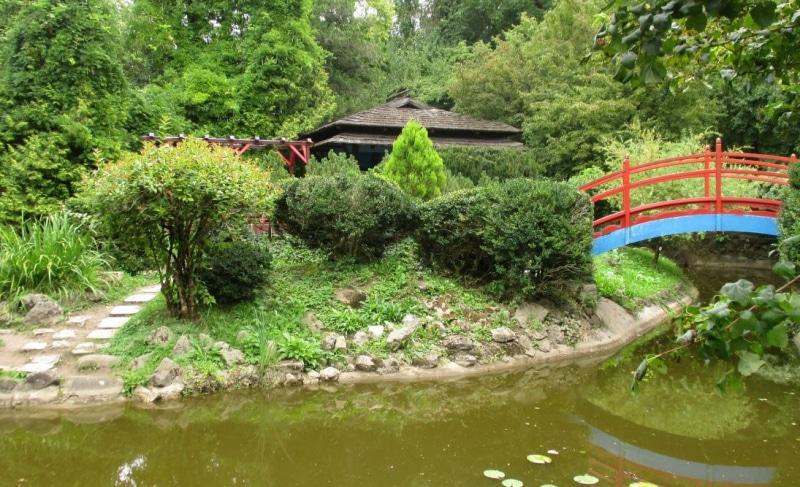
Removed from Unnamed collection
Alexandru Borza Botanical Garden 
Alexandru Borza” Botanical Garden (42 Republicii Street) – Being a national museum, the garden was founded in 1872, having an initial surface of 4.3 ha. Thanks to prof. A. Richter, the surface has reached 9.6 ha.
In 1920, professor Alexandru Borza elaborated the re-organization plan of a new botanical garden, whose arrangement was carried out from 1920 to 1930. Nowadays, the garden has a surface of 14 ha, a level difference of 20 m and is divided into various sectors, sheltering 11.000 exhibits: the ornamental sector ( The Mediterranean Garden, Rosarium, The Japanese Garden), the phytogeographic sector (the plants are arranged according to their natural associations – The Roman Garden), the systematic sector (the plants are organized by phylogenetic principles), the economic and medical sector, the sector of rare and endemic plants of Romania`s flora.
The two groups of greenhouses, having a surface of 3500 m2, with tropical plants of great scientific and utilitarian interest, are remarkable. In the precincts of the Botanical Garden functions the Botanical Institute, with its two components: the Botanical Museum (6 910 botanical pieces, representing exotic and indigenous plant exhibits) and the Herbarium (660 000 herbarium sheets of dried plants – arranged in special lockers). http://www.visitclujnapoca.ro/en/atractii-turistice/best-of-cluj-napoca/alexandru-borza-botanical-garden.html
Map

Removed from Unnamed collection
Vivarium 
The Vivarium was built between 1998 and 2001 out of the Babes-Bolyai University and the Biology and Geology Faculty funds. It contains approximately 57 animal species. When it opened in 2001, it only sheltered a collection of reptiles and amphibians. Currently, alongside the reptile collection, the Vivarium also hosts 10 fish species, 9 micro mammal species and 6 bird species, out of which we can mention the Puff Adder, the Rainbow Boa, the leopard gecko, the Nile monitor, the chinchilla, the Dobrogea turtle, the salamander etc. http://www.visitclujnapoca.ro/en/atractii-turistice/muzee/page/3/the-vivarium.html
Map
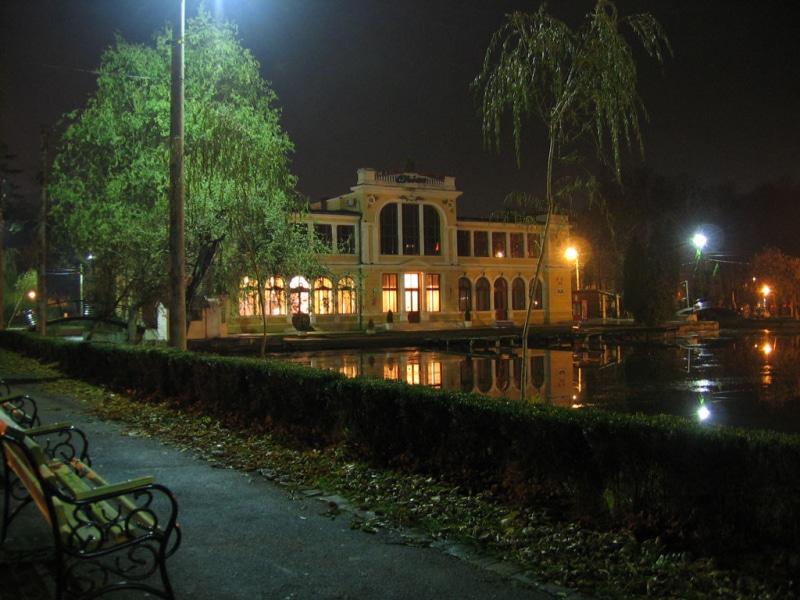
Removed from Unnamed collection
Central Park Simion Barnutiu 
Creating Central Park had been one of the first initiatives of urban remodelling of the city at the end of the 19th century. Its purpose had been the creation of a leisure spot in the close proximity of the city center. The initial name of the area field was ants’ grove situated on the bank of the river Somes. At the beginning of the 19th century, this spot was visited by all citizens of Cluj, the furrier János Meleg provided the public with refreshments.
In 1827, the Women’s Charity Organization will rent the grove with the intention to create a “place suitable for longer strolls” and a beer garden based on a contract of 12 months. This contract would also determine the municipality to initiate and sponsor some of the works necessary to drain and consolidate the land that had been a swampy area frequently flooded by the river.
In the year 1833, together with the return of the Gubernium a decision will be made on how to spend the gathered money on the development of the park. On this occasion they will establish and name the members of the Promenade comity, a council made up of important members of the urban community; they will also employ the gardener József Schütz to plant, clean and maintain the park. The park itself had been originally founded on the 22nd April 1838 and after two years the engineer Sámuel Hermann was entrusted with the design of the park. http://www.visitclujnapoca.ro/en/atractii-turistice/best-of-cluj-napoca/simion-barnutiu-central-park.html
Map
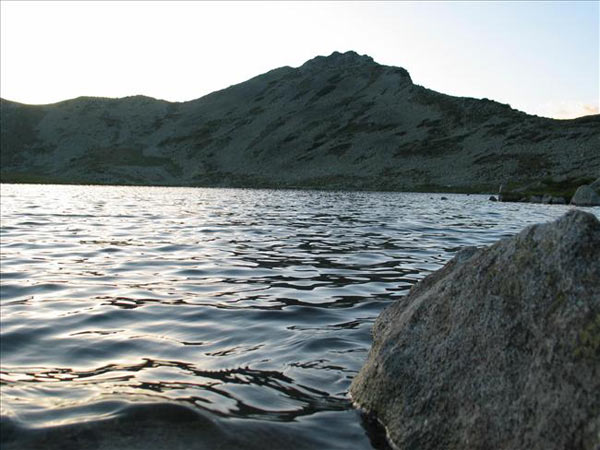
Removed from Unnamed collection
Pirin National Park 
Because of the unique biodiversity and spectacular natural formations of Pirin, the Government of Bulgaria has established over 40,000 ha of mountain protected area – Pirin National Park. It is a piece of nature that is a priceless Bulgarian and world heritage and is included in UNESCO’s “Man and the Biosphere” program.
The landscape of the Pirin Mountains is diverse and includes a notable alpine area, dotted with many lakes, forested mountain landscapes that define the unique fauna richness in the mountain.
The composition of forests in the territory of Pirin National Park includes 16 tree species, some of them are endemic species, others are of particular conservation significance, or represent some of the largest inventories of tree species in Europe and in Bulgaria. The total area of the Pirin National Park is 40,356 ha and the forested area is 23,110 ha. Within the large area there is dwarf pine, white fir, white pine, spruce, fir, beech, and black pine. The average age of forests in Pirin National Park is 85 years, the largest proportion of forests are older than 140 years. http://bansko-guide.com/attraction/pirin-national-park/
Map
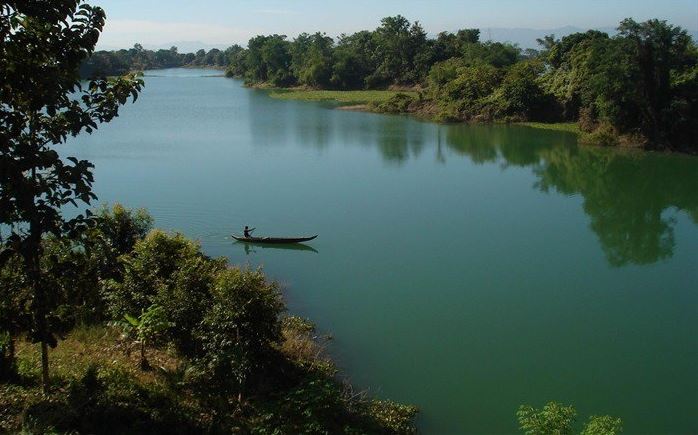
Removed from Unnamed collection
Lunca Muresului Natural Park 
The Lunca Muresului Natural Park (Floodplain) is a protected area in Romania, downstream of Arad, until to the border with Hungary, along the river Mures, classified as a natural park at the national level and as a terrestrial landscape protected by IUCN (International Union for Conservation of Nature).
It comprises the dammed area of the river Mures, respectively the flood area of dams on either side of the river between high terraces of the same river. Is an area with periodic flooding where the surrounding plants and animals are adapted to this regime.
Lunca Muresului Natural Park Natural Park hosts over 200 species of birds. In the forests of the park, we will find deer, wild boar, squirrel and fallow deer. http://www.uvisitromania.com/tourist-attractions/arad/lunca-muresului-natural-park-id550
Map

Removed from Unnamed collection
Carpathian National Nature Park 
This is the first and the largest national park in Ukraine, created in 1980 to protect the unique natural riches of the Carpathian Mountains. Majestic mountains, picturesque valleys, mountain pastures, crystal lakes, pure rivers, healing springs, valuable monuments of archaeology, history and architecture - all of them make the Carpathian Natural Park desirable to many travellers from all over the world.
Located in the mountains of the Prut River basin, the park occupies a territory of over 50 thousand hectares. It amazes not only with its fantastic landscapes and unforgettable scenery, but also with the variety of its flora and fauna. A large number of various plants grow in the part, many of which are on the endangered species list, and almost 200 species of animals and birds live here.
Nine hundred meters (2950 feet) above sea level, the Guk waterfall is considered to be the park’s gem, as are the glacial lakes Maricheika (on the mountain Shurin-Gropa) and Nesamovyte (on the mountain Turkul). It is said that sinners’ souls live in the Nesamovyte lake, so one should not swim and throw stones into it. If its waters are disturbed, the sky will fall down in a hailstorm. To judge from the frequency of storms in the region, the park’s guests frequently break this taboo. https://discover-ukraine.info/places/western-ukraine/ivano-frankivsk/80
Map
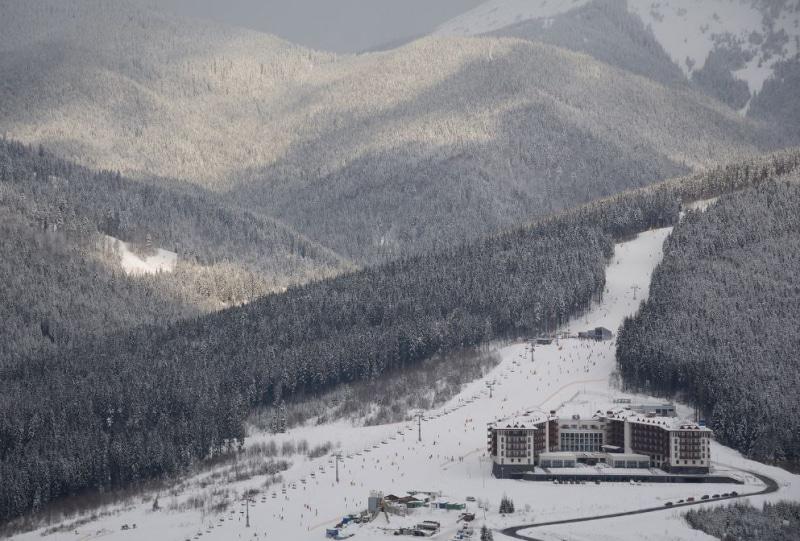
Removed from Unnamed collection
Bukovel 
Despite being relatively young, Bukovel is known as one of the most famous and ultramodern ski resort in Ukraine. This recreational haven owes its enormous popularity among both Ukrainian and foreign lovers of outdoor activities to its climate, endless comforts, and plenty of well-equipped skiing trails.
Bukovel is situated in one of the most beautiful places in the country, the Ukrainian Carpathians, at an altitude of 920 meters (over 3000 feet). Because snows fall early in the year, and stay for a long time, from November to April the resort has ideal skiing and snowboarding conditions. The resort has 16 ski lifts, ranging from 650 meters to 2000 meters (2130 to 6560 feet) long, which make it one of the biggest ski resorts not only in Ukraine but all of Eastern Europe.
Bukovel is especially proud of its excellent ski trails, which, in total, are over 50 kilometers (30 miles) long. They are spread out across five mountains, on specially prepared slopes. Each visitor can choose a track to his or her experience level: there are difficult trails for professionals, and easier ones for beginners; they even have slopes for children. All the trails are equipped with snow canons and are constantly maintained, so they always stay in perfect condition. Bukovel’s slopes are also lit up, so they stay open in the evening. These high-grade trails attract not only skiers, but also those who are fond of snowboarding and riding snowmobiles. https://discover-ukraine.info/index/western-ukraine/bukovel
Map
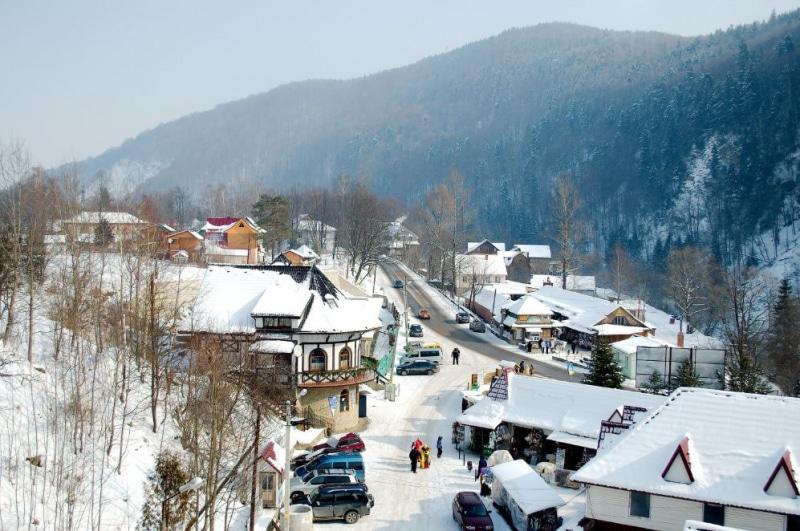
Removed from Unnamed collection
Yaremche 
Situated in the picturesque Prut River valley, this little town is one of the most famous tourist centers of the Carpathian region. First and foremost, Yaremche is a popular ski resort. Its numerous visitors are attracted by its breathtaking mountain landscapes, pure air, unique Guzul character, and variety of leisure activities.
During the winter, Yaremche is populated with skiers and snowboarders. Winters here are a skier’s paradise: it is not too cold, and there is very little wind, but a lot of snow. The mountain slopes especially good for beginners, but are unlikely to impress professionals. Thus, more experienced skiers often choose to visit neighbouring ski resorts - Bukovel, Vorohta and Yablunitsa.
But you can admire Yaremche’s unique architecture of all year round! You will find many interesting churches, monasteries, and landmarks in the town. Yet perhaps the town’s main attraction is the Probiy waterfall. It is certainly not the highest (it is only 8 meters – 26 feet – high), but it is the most powerful and picturesque waterfall in all the Ukrainian Carpathians. The torrents of the Prut River, which find their way through the stones, create an unforgettable show, which you can watch from a small footbridge that crosses the river.
Not far from the waterfall lies a well-known souvenir market, which has already become one of Yaremche’s most popular attractions. You can buy original handicrafts of local craftsmen, at the same time getting acquainted with the distinctive Guzul culture. https://discover-ukraine.info/index/western-ukraine/yaremche
Map
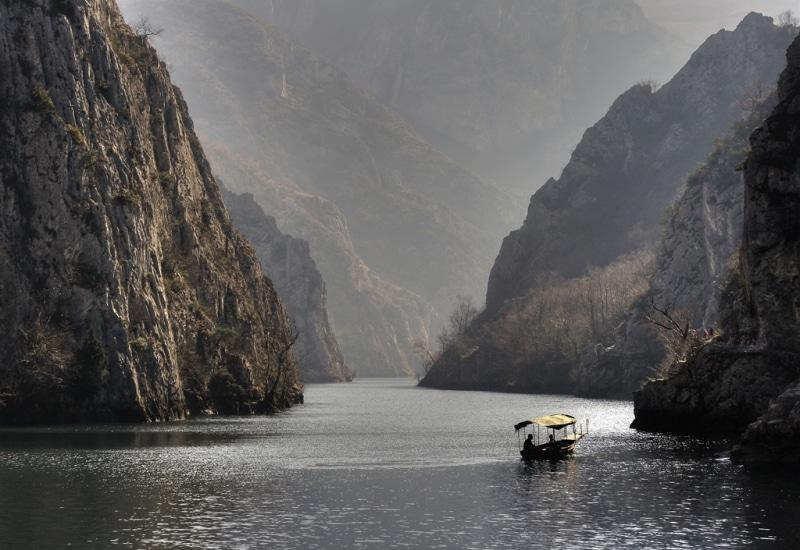
Removed from Unnamed collection
Matka Canyon 
Matka - A gorge in which a rich complex of mediaeval building survives, including churches, monasteries and remnants of a fortress (the mediaeval town of Matka).There are dozens of caves and a large number of endemic plants and animals. The Canyon covers an area of around 5.000ha and is located 15km south-west of Skopje. By its morphogenetic characteristic, it is a breakthrough gorge. Krastic form deserve particular attention here-ten caves with their length ranging between 20 and 176 meters and two vertical chasms with a depth up to 35 meters. Matka was one of the largest refugee centers during the glacial period resulting in the presence of a high number of relic and endemic plants, 20% are endemic or relic spices. Among Tertiary relics, the most significant are the Kozani violet and Italy's Ramonda (Ramonda Natalie). It is also important to mention that there are 77 species of Balkan endemic small butterflies in area of Matka Canyon, while 18 other species are new to the science. http://www.exploringmacedonia.com/matka-canyon.nspx
Map
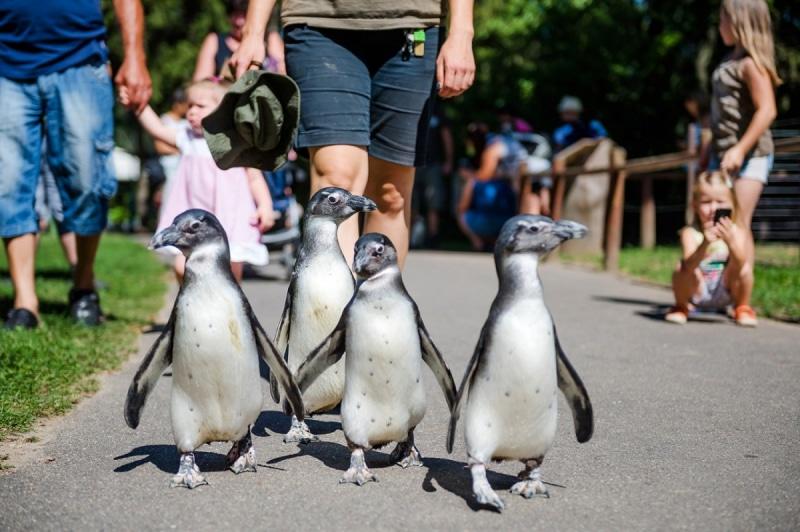
Removed from Unnamed collection
Debrecen Zoo and Amusement Park 
Open all year round, the Debrecen Zoo is home to some 900 individuals of 170 species from all five continents. Besides permanent exhibits, there are a number of daily events and activities involving close visitor encounters with fascinating animals as part of the Animals in Action program, as well as a number of seasonal events such as summertime Evening Walks or Animal Christmas. A full member of the European Association of Zoos and Aquaria (EAZA) since 1994, the Zoo also reflects the current need for the protection of biodiversity by contributing to coordinated conservation efforts like European Endangered Species Programs (EEPs) through managing healthy and productive populations of various endangered species like the leopard cat, the reticulated giraffe, the African penguin, and the ring-tailed lemur.
Integrated into the Zoo and Amusement Park, the ever-growing botanical collection currently features around 650 species, including ones from the Great Forest biotope and other parts of Hungary as well as ones native to various exotic corners of the world. There is also a Scent Garden section, home to a wide variety of aromatic herbs, enabling visitor interaction through the sense of smell. https://www.debrecen.hu/en/tourist/places/nagyerdei-entertainment-complex
Map
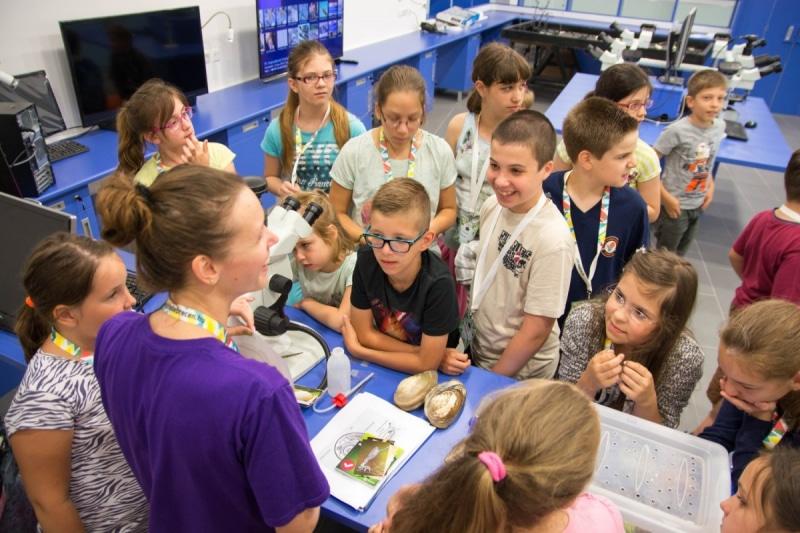
Removed from Unnamed collection
Agora Science Adventure Center 
Agora presents serious scientific knowledge and the little wonders of everyday life in a fun and easy-to-understand way.
The center is a new attraction in the life of the region; it offers exciting adventures and lifelong experience to all age-groups. It presents serious scientific knowledge and the little wonders of everyday life in a fun and easy-to-understand way. Agora features more than thirty interactive games and gets visitors involved in spectacular experiments. At the top of the futuristic three-storey building, stargazers will be delighted to test the limits of the observatory taking aim at the Sun, our fellow planets and other celestial bodies. https://www.debrecen.hu/en/tourist/places/agora-scientific-adventure-center
Map
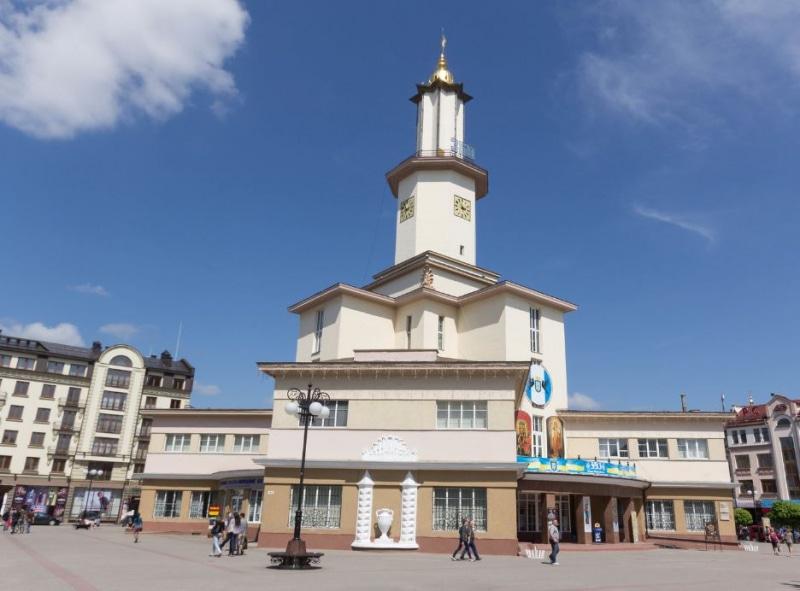
Removed from Unnamed collection
Market Square Ivano-Frankivsk 
Customary for most European towns Market (Rynok) Square is definitely the most popular tourist place in Ivano-Frankivsk. This is not only due to its being town's historical heart, where business and cultural life is in full swing but also due to the whole constellation of the most interesting historical and architectural monuments that are concentrated at the town's main square.
Being originally planned and surrounded by ancient cathedrals and fairy-tale houses with miniature statues and fanciful bas-reliefs, the Square is a vivid embodiment of the Renaissance idea of an ideal town. Due to its unique architectural ensemble, whose every building is a true artwork, Ivano-Frankivsk Market Square is frequently compared to its Lviv's namesake, and the town itself is called 'Little Lviv'.
Square's main adornment is the elegant Town Hall, the only one in Ukraine built in art nouveau style. Rising high into the air for almost 50 meters, it is the Ivano-Frankivsk's tallest building and, according to the architects' idea, acts as town's main landmark. https://discover-ukraine.info/places/western-ukraine/ivano-frankivsk/787
Map
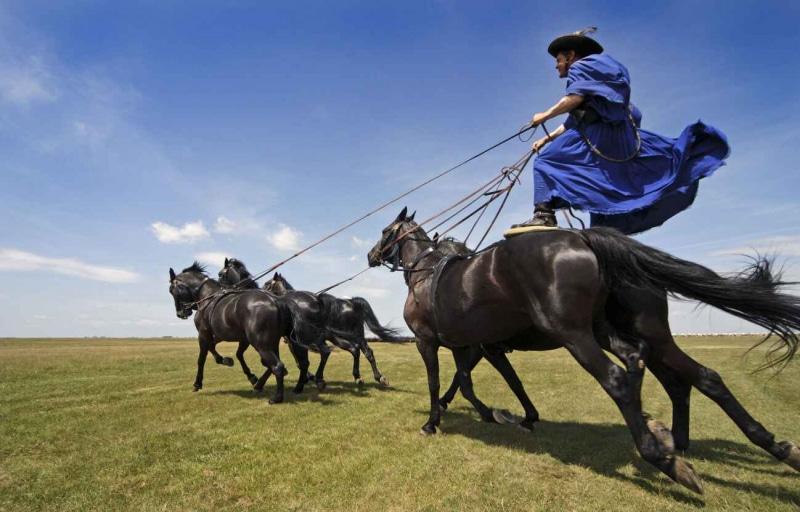
Removed from Unnamed collection
Hortobagy 
Proudly bearing its title of UNESCO World Heritage Site, Hortobágy National Park is the perfect archetype of pristine natural landscapes. This is the place where everyone longs to find refuge from the monotony of modern human existence. The feeling of unfettered freedom, encapsulated in the spectacle of the endless horizon, mirages, grazing herds of cattle and horses, and sweep-pole wells, will capture your imagination and soul during a horse-and-carriage ride or “puszta” safari.
A picturesque trip to the fishponds on the small narrow-gauge train, combined with some birdwatching, will serve unique experiences to both young and older adventurers. Here the breeze wafts the scent of fragrant chamomile, mint, and artemisia from wild fields, gently touching your nose just like the waves of the ocean rhythmically splashing on the shore. It is a place where you will reinterpret the meaning of silence.
It is a place where you might even reach celestial bodies during the special night treks in Starry Sky Park. In Hungary’s oldest and largest national park, awarded the European Destinations of Excellence (EDEN) prize, hundred-year-old herdsman’s traditions are still part of people’s means of subsistence and not mere promotional gimmicks. https://visitdebrecen.com/see-do/hortobagy/
Map
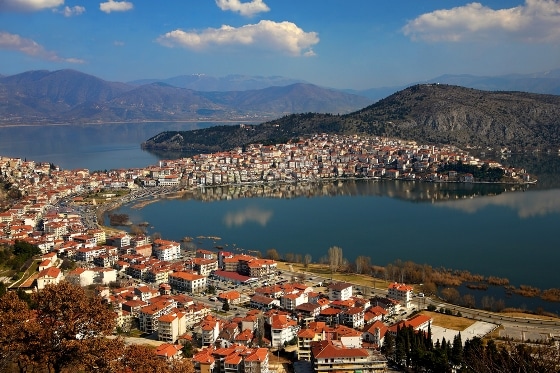
Removed from Unnamed collection
Orestiada Lake 
The best way to explore the city is taking a little tour around the lake starting from the southernmost side up to the northernmost. Take a stroll on the narrow pathway along the lake’s coast; you will be overwhelmed by its idyllic beauty and tranquility. http://www.visitgreece.gr/en/main_cities/kastoria
Map
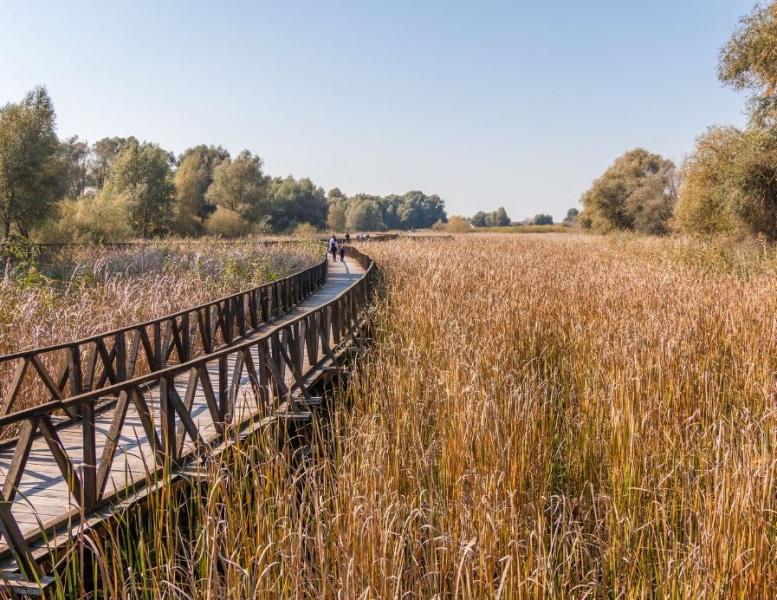
Removed from Unnamed collection
Kopacki Rit Nature Park 
Kopacki Rit (pronounced ko-pachkee rit) Nature Park is a flood area ( rit means marsh) between the Drava and Danube rivers in the Osijek-Baranjska region of eastern Croatia. Sometimes called "the pearl of the Drava", the nature park covers 177 sq kilometres holding more than 20000 waterbirds in winter of 267 different species. You'll find cormorants, herons, gulls, terns, ducks and egrets Some of the birds such as the black stork and the great white egret are rare in Europe but the most prized inhabitant of Kopacki rit is the largest Croatian eagle, the white-tailed eagle.
As the largest remaining wetlands in Europe, Kopacki rit changes in accordance with the seasons. In spring, high waters, mostly from the Danube, flow in the marshlands bringing fish that come to spawn in the shallows The warmth makes the water plants, plankton and insects flourish making it one of the most fertile spawning areas of the Danube region Spring is also marked by an explosion of frogs.
In the central part of the reserve is a lake that is connected to the Danube by a canal that serves as a conduit for most of the water throughout the marshlands The north part of the park is composed of willow, poplar, oar and ash forests. Here you'll find deer, wild boar, fox wildcats, martens, weasels and other creatures. https://www.croatiatraveller.com/National%20Parks/Kopacki.htm
Map
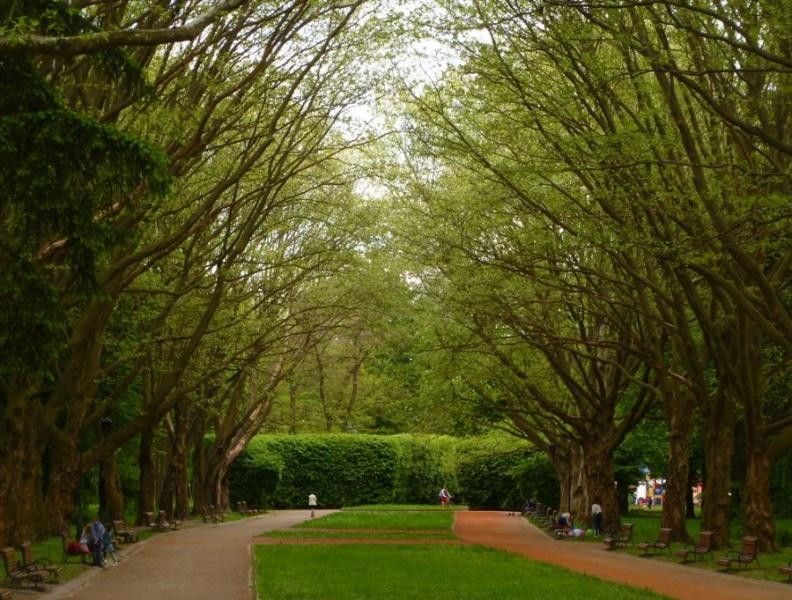
Removed from Unnamed collection
Stryiskyi Park 
The Stryi Park is the largest one in the city and is reckoned among the oldest and the most picturesque parks not only in Lviv but in the whole Ukraine. Rightfully recognized as one of the best samples of landscape art, it is the most visited place in the city. Park’s neat lanes are always crowded by people willing to rest from urban fuss and admire magnificent sceneries.
The Stryi Park was designed by the prominent European architect, renowned master of the landscape art, and was laid out in the late 19th century. It occupied the territory of the namesake cemetery that was closed fifty years earlier. After construction’s end, the park was immediately equipped with necessary amenities. More than 40 thousand bushes and trees, including both usual for these latitudes and exotic ones (ginkgo, red oak, tulip tree, and Japanese lilac), were planted there. The Stryi Park is famous for its very rich collection of rare and valuable trees; more than 200 species of plants grow there, greenhouse and rock garden are equipped, and lime and plane alleys are laid out. https://discover-ukraine.info/places/western-ukraine/lviv/1359
Map

Removed from Unnamed collection
Svobody Avenue 
Svobody Avenue is the city main street combining functions of the business and cultural center. It is Lviv’s second most important historical spot after Rynok Square. The avenue owes its status as one of the most beautiful and elegant streets in the city to its splendid architecture, which harmonically combines traits of various historical styles. Elegant ancient houses, framing it from both sides, are Svobody Avenue’s main adornment and create its unique atmosphere.
Once, the western line of Lviv fortifications, called Lower Walls, was located there. In the late 18th century, when the city was under the governance of Austria-Hungary, dilapidated fortifications were pulled down and the even side of the modern avenue was formed. The odd side was constructed on the marshy bank of the Plotva River, which was hidden under the ground, later.
Svobody Avenue’s most attractive building, its symbol and highlight, is the magnificent Opera House. Other notable structures include the elegant National Museum, the former Galych Credit Fund (currently the Museum of Ethnography and Arts Crafts), the Viennese Coffee House and the Grand Hotel. One of the Svobody Avenue’s most recognizable sights is the unusual monument to Taras Shevchenko with 12-meter-high bronze stele ‘Wave of National Renaissance,’ installed in its center. https://discover-ukraine.info/places/western-ukraine/lviv/1362
Map
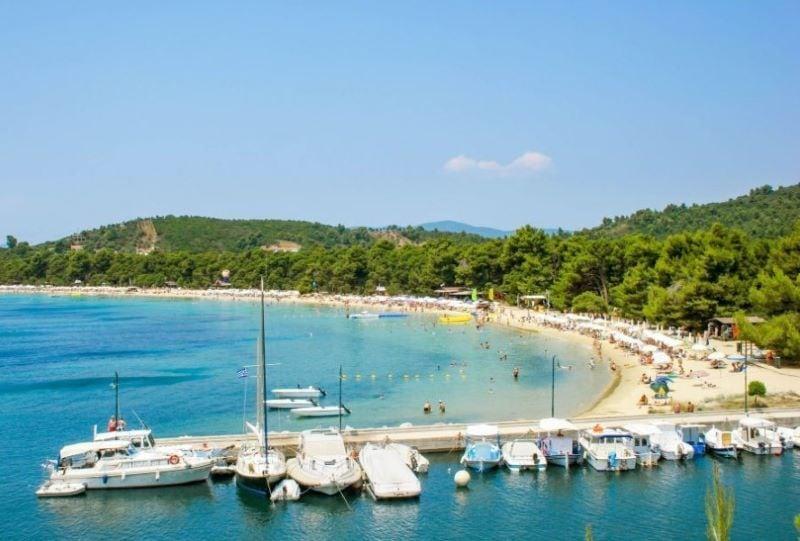
Removed from Unnamed collection
Koukounaries Beach 
Koukounaries beach is the most famous beach of Skiathos, therefore the most crowded. It is well-known for its extremely fine white sand and its fragrant pine trees forest from which the region took its name. It is considered as the most unspoiled natural beach of the Mediterranean and is a protected environment. The beautiful crystal-clear deep blue waters are a real pleasure. Since the beach is well-organized, it offers many water sports, chairs, umbrellas, beach bars.
The region around the beach is full of restaurants, taverns and hotel units. A local bus links this beach to the capital every 30 minutes. A biotope can be found in the pine forest boarding the beach where different species of plants and birds are protected. This place, as well as the beach, is developed for ecotourism, financed by the Municipality and the European Union. https://www.greeka.com/sporades/skiathos/beaches/koukounaries/
Map
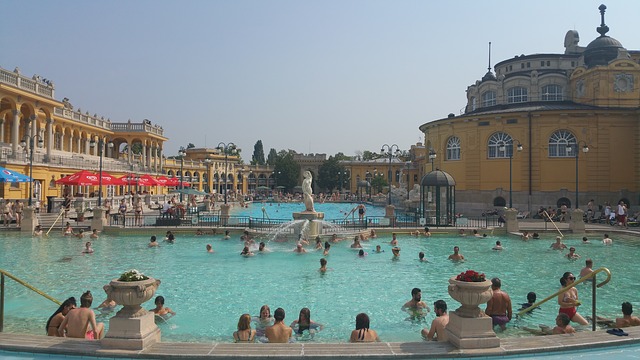
Removed from Unnamed collection
Szechenyi Thermal Bath 
With 21 pools, Széchenyi Bath is one of the largest bathing complexes in Europe. Its adventure pool features a water chute, underwater jacuzzi, neck shower and bubble deck. In addition to traditional medicinal services, the entrance fee also includes wellness services such as the fitness gym, saunas and underwater gymnastics. https://www.budapestinfo.hu/szechenyi-thermal-bath-and-swimming-pool-1
Map

Removed from Unnamed collection
Margaret Island 
Walking the length of the island takes about 20 minutes, but most visitors spend time at the Hajós Alfréd and the Palatinus outdoor pools. The Palatinus water park is a popular place in the summer, especially on the weekends. The 11 outdoor pools, including two for children, are in a beautiful setting. If it is too cold to go for a swim, an island tour introduces relics hailing back to the island's religious origins, including a 12th century convent and ruins of a Franciscan and a Dominican church. During summer months, bicycles, inline skates and 'bringóhintó', a four-wheeled bike for four, are available for rent. Since vehicles are prohibited, the island is a fantastic escape from the bustle of the big city and a great place to work out, swim a few laps, or go for a run.
Other attractions on the island include the Centennial Memorial which commemorates the 100th anniversary of Budapest, a Japanese Garden, a tiny zoo, a music fountain, and an octagonal water tower, built in Art Nouveau style in 1911. The outdoor theater hosts operas, concerts and plays during summer.
The thermal water on Margaret Island is famous for its healing effects. The natural, thermal water running beneath the island was first brought to the surface in 1886. In addition to its healing power, a day at the Danubius Health Spa is also a great way to relax and unwind. http://visitbudapest.travel/guide/budapest-attractions/margaret-island/
Map
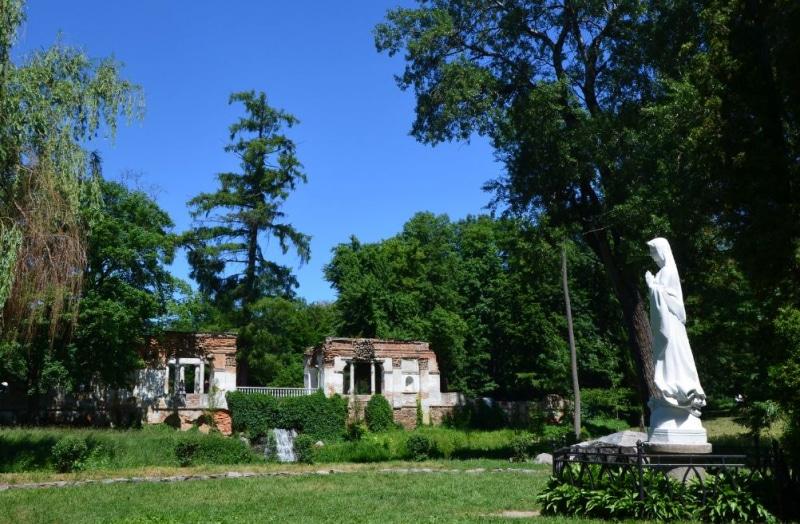
Removed from Unnamed collection
Dendropark Oleksandriya 
Stretching over the western outskirts of Bila Tserkva, not far from Kyiv, the Dendropark Oleksandriya is considered to be one of the most beautiful and charming landscape parks in the country. Created by the best European architects and gardeners, it is a vivid monument of landscape art of the 18th-19th centuries. Oleksandriya occupies a territory of 200 hectares and is, therefore, the largest landscape park in Ukraine and one of the largest ones in Eastern Europe. It is always full of guests, who are attracted by special atmosphere and an opportunity to escape the urban hustle and bustle in splendid natural surroundings.
The landscape park was named after Aleksandra von Engelhardt, the own niece of the Prince Grigory Potyomkin and the lady-in-waiting of Catherine the Great, who received the mansion in Bila Tserkva as a present from her husband, crown hetman of Poland Ksawery Branicki. Being amazed by luxurious parks in European capitals, she decided to create an as beautiful and elegant landscape park in her residence. However, on the contrary to prim park complexes of the Old World with stiffly cut trees and ideally straight lanes, the countess wanted to make the landscape of her park as close to natural as possible. She didn’t strive to change local nature, rather to bring some order in it, highlighting its beauty and richness. https://discover-ukraine.info/places/kyiv/kyiv/2342
Map
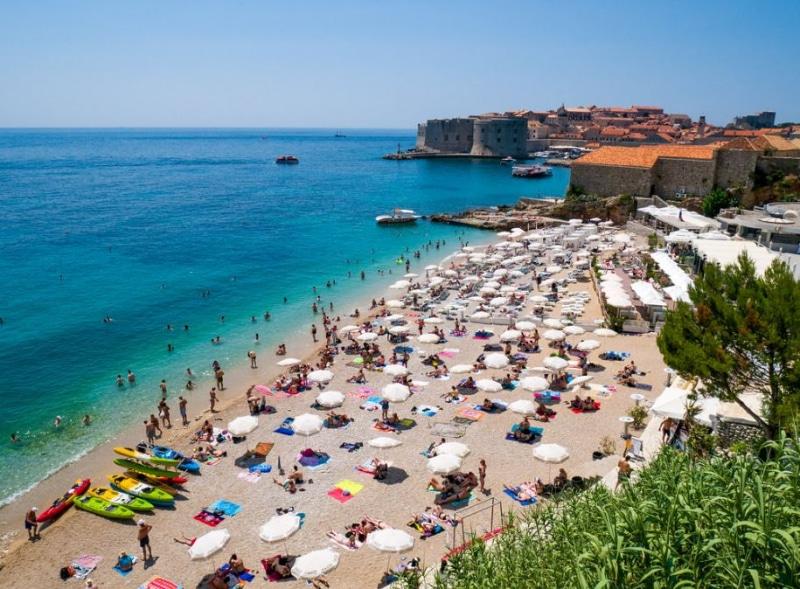
Removed from Unnamed collection
Banje Beach 
With beautiful views over Dubrovnik Old Town and Lokrum Island, Banje Beach is located in front of the eastern entrance to Dubrovnik Old Town (Ploče Gate), situated on the seashore of hotels Excelsior and Argentina. The beach has its reception, restaurant and sleek and minimalist cafe bar on the waterfront with often snobbish clientele. You can rent your deck chair and parasol, jet ski, speed boat, and god knows what else – it keeps changing from summer to summer. Banje is well known among visitors to the town so it can be very crowded in the summer seasons. https://www.dubrovnik-travel.net/banje-beach/
Map
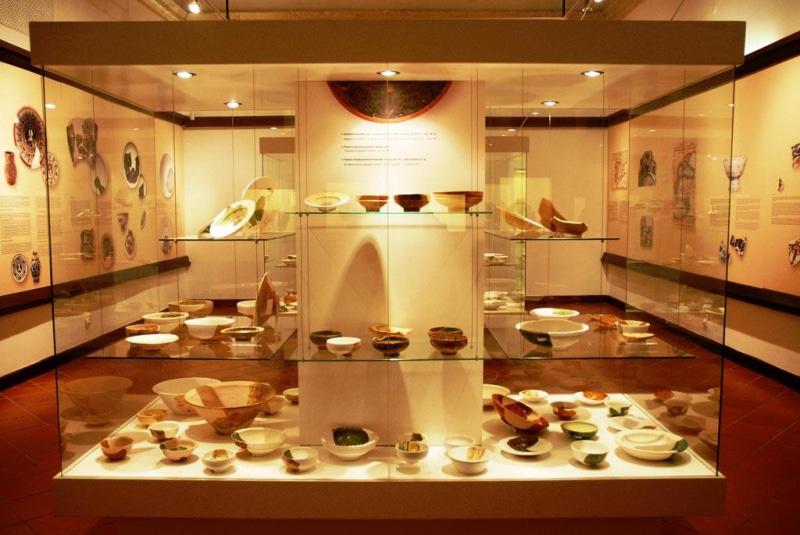
Removed from Unnamed collection
Archaeological Museum Dubrovnik 
In 1872, the Patriotic Museum was founded in Dubrovnik; in the middle of 1873, the first museum display was made in the commune building. Among the exhibits, which were mainly from the period of the Dubrovnik Republic, the archaeological objects nevertheless stood out, for example, an Egyptian mummy, Greek vases and ancient amphorae.
The donors were collectors, leading members of patrician families, sailors and Dubrovnik people living elsewhere. Foremost among them were the great benefactors and donors the Amerling brothers, who had been passionate advocates of the museum’s founding; they gave most of the Egyptian, Oriental and Japanese objects, birds, minerals and rarities of all kinds. In 1882, Arthur Evans, world-renowned archaeologist and initiator of archaeological research in the Dubrovnik area, gifted to the museum three Roman funerary inscriptions from Cavtat, the first entries into the book of donated and purchased objects.
At the time the science of archaeology was being founded in Croatia in the early 20th century, lovers of antiquities gathered around the Dubrovnik branch of the Croatian Antiquarian Society in Knin and the Braće Hrvatskog Zmaja started to investigate the ruined Church of St Stephen, and after that it served as a temporary lapidarium for pre-Romanesque sculpture. https://www.godubrovnik.guide/dubrovnikthingstodo/archaeological-museum/
Map
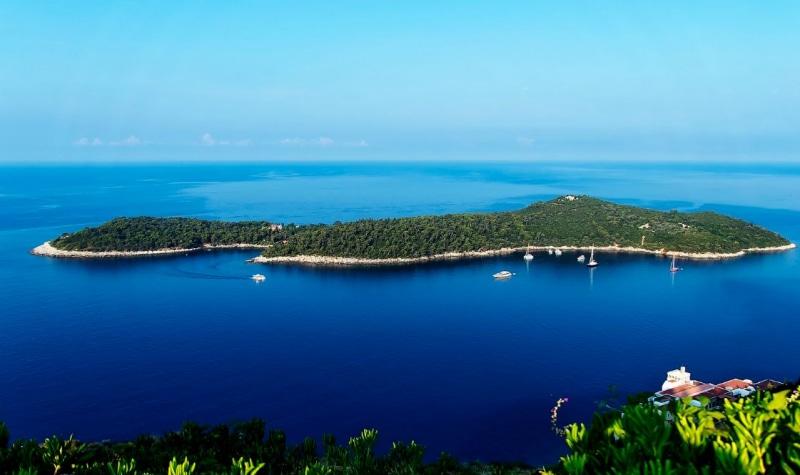
Removed from Unnamed collection
Island of Lokrum 
Just a breath away from Dubrovnik stands the mysterious island of Lokrum. It’s one of the World’s seven cursed islands.
Lush Lokrum is a beautiful, forested island full of holm oaks, black ash, pines and olive trees, only a 10-minute ferry ride to Lokrum from Dubrovnik’s Old Harbour. It’s a popular swimming spot, although the beaches are rocky. Boats leave roughly hourly in summer (half-hourly in July and August). The public boat ticket price includes the entrance fee, but if you arrive with another boat, you’re required to pay 120KN at the information centre on the island.
The island’s main hub is its large medieval Benedictine monastery, which houses a restaurant and a display on the island’s history and the TV show Game of Thrones, which was partly filmed on Lokrum. This is your chance to pose imperiously on a reproduction of the Iron Throne. The monastery has a pretty cloister garden and a significant botanical garden, featuring giant agaves and palms from South Africa and Brazil. Near the centre of the island is circular Fort Royal, commenced during the French occupation in the early 19th century but mainly used by the Austrians. Head up to the roof for views over the old town.
To reach the nudist beach, head left from the ferry and follow the signs marked FKK; the rocks at its far end are Dubrovnik’s de facto gay beach. Another popular place for a swim is the small saltwater lake known as the Dead Sea. https://www.godubrovnik.guide/dubrovnikthingstodo/island-of-lokrum/
Map







